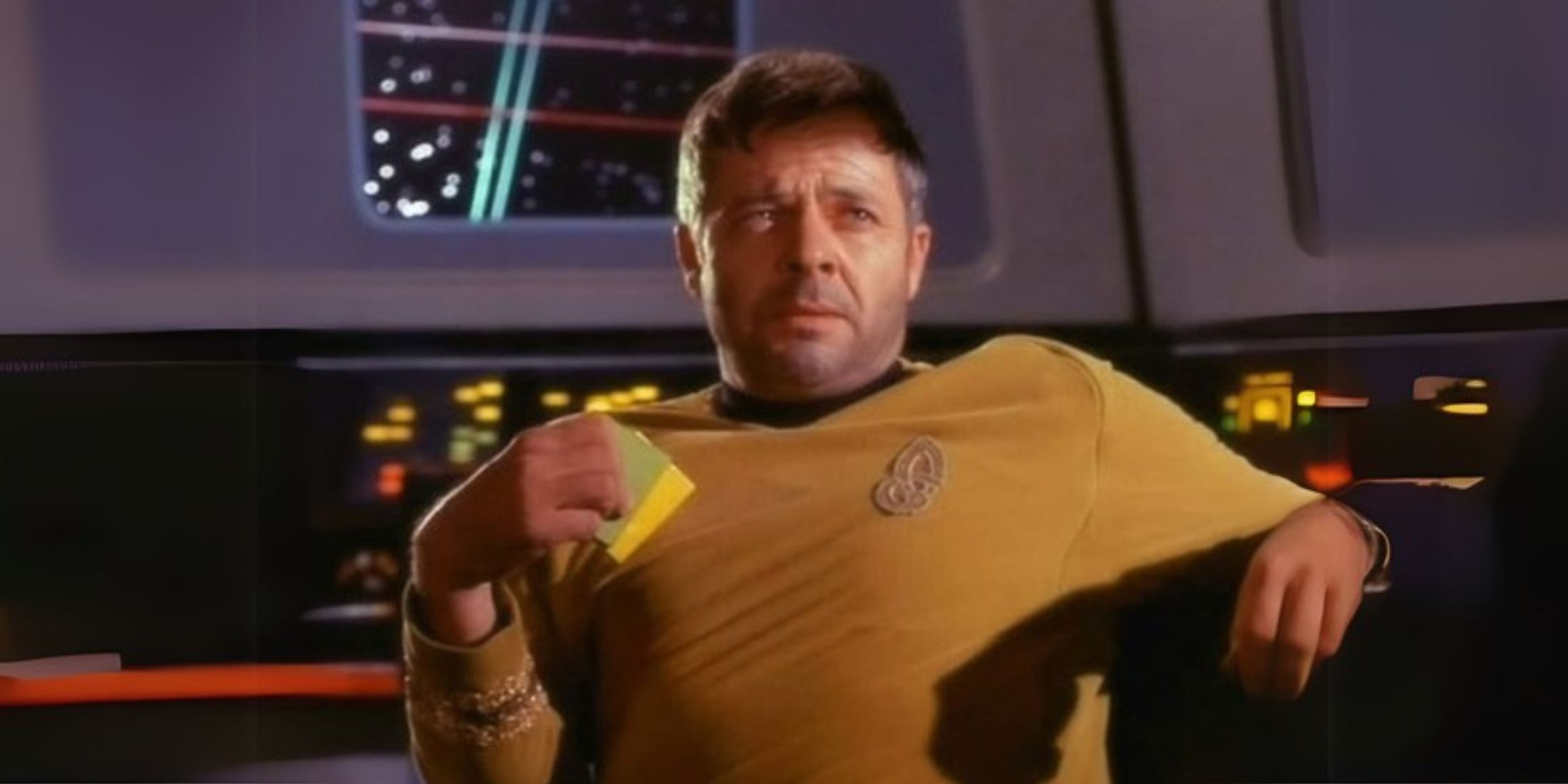
In the universe of Star Trek, few symbols carry as much weight as the Starfleet insignia – a delta-shaped emblem that embodies the spirit of exploration and unity within the United Federation of Planets. Yet, the delta’s first on-screen appearance has sparked discussions among enthusiasts for quite some time.
For several decades, enthusiasts of “Star Trek: The Original Series” have assumed that each starship had a distinct insignia. This idea seems to be reinforced by episodes displaying various emblems. However, a previously undisclosed 1967 production memo has emerged, casting doubt on this long-held notion and revealing the genuine purpose behind Starfleet’s logo in “The Original Series”.
The Origins of the Starfleet Insignia
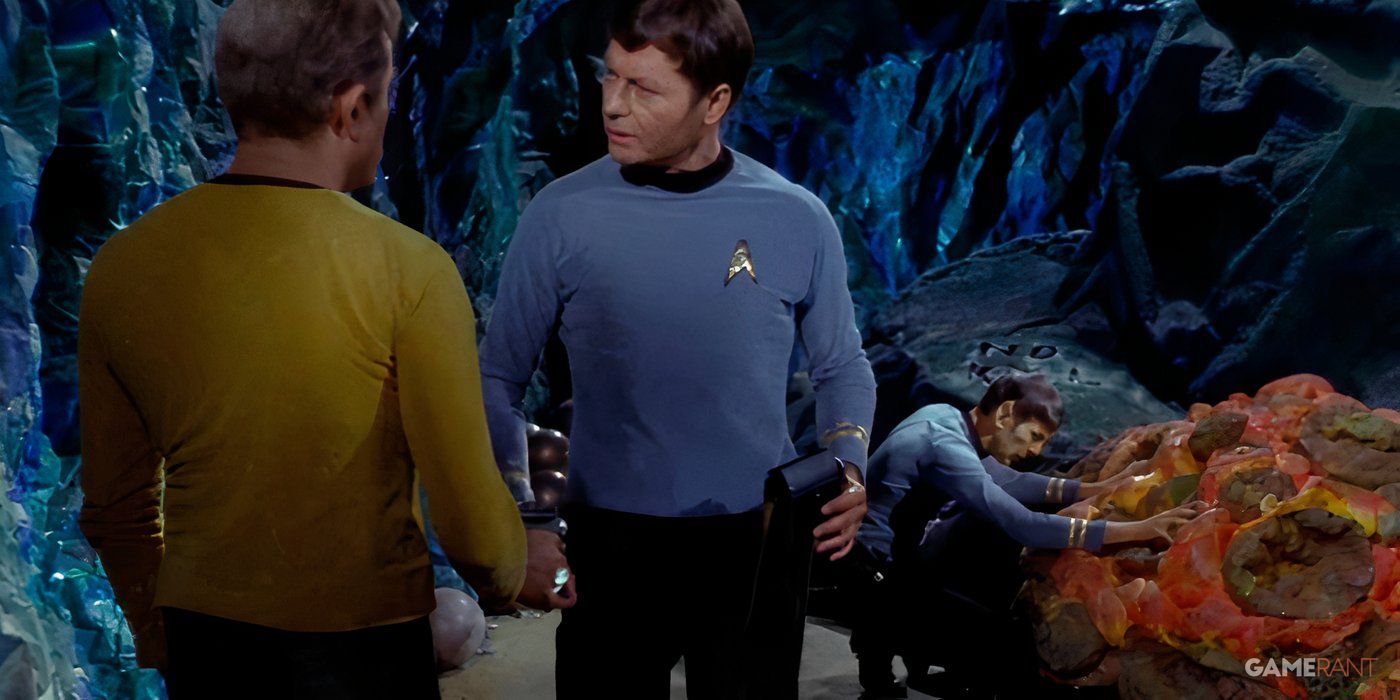
The “Arrowhead” symbol, also known as the delta emblem, was initially created in 1964 by William Ware Theiss, a costume designer, and Gene Roddenberry, the series creator. This symbol was intended to be placed on the uniforms of Starfleet personnel and has been associated with the franchise ever since. It is thought that the design draws inspiration from early NASA logos and U.S. Air Force patches. Given its long history, the insignia has come to represent the franchise as a whole.
Evidence of Multiple Early Insignias
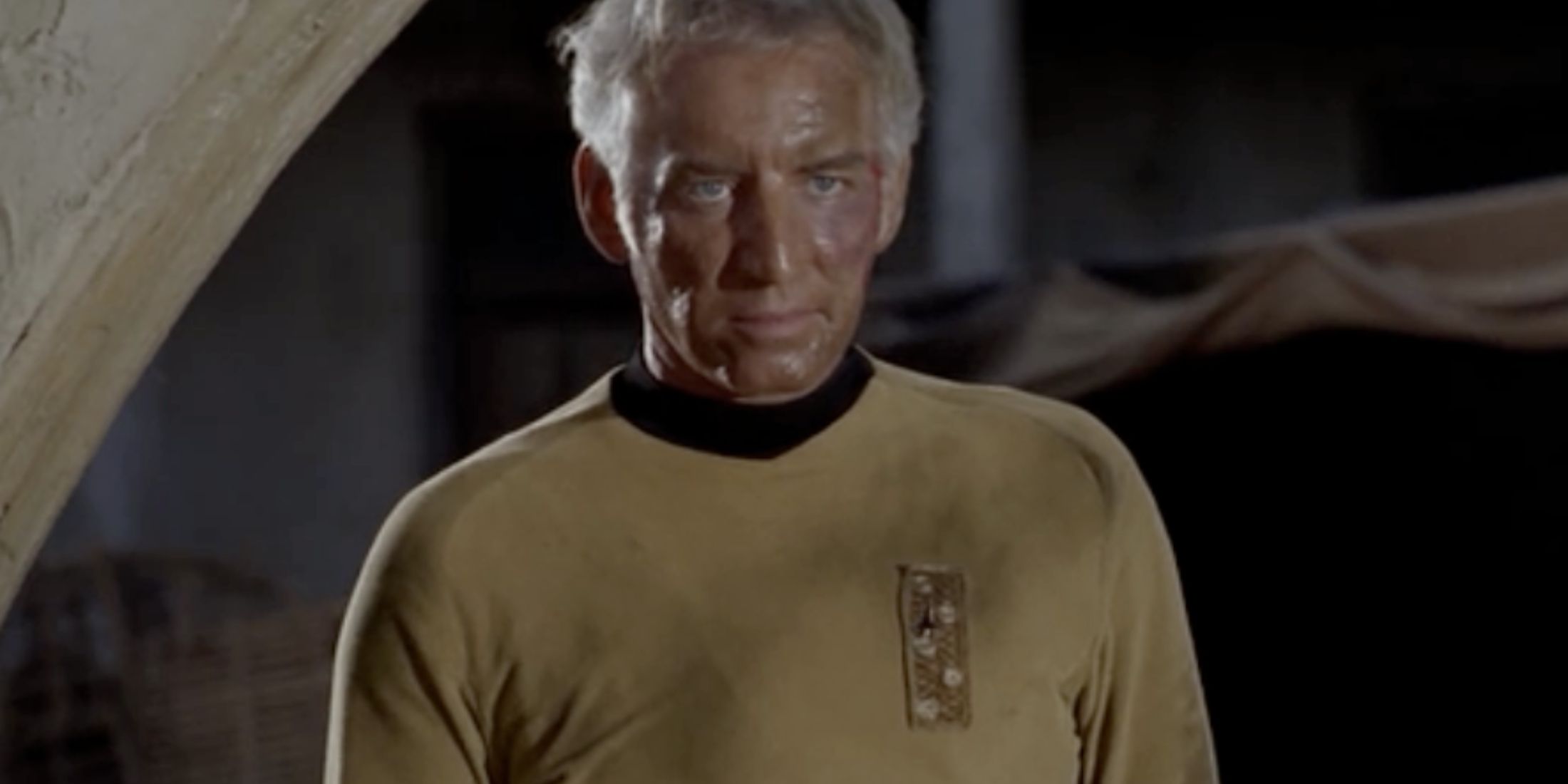
In the classic Star Trek series, starring William Shatner and Leonard Nimoy, it’s a commonly held belief among fans that each individual starship in the Starfleet fleet had its unique emblem. This theory gained traction due to several episodes in which different insignia were displayed, with the “Omega Glory” episode from season two being particularly notable. In this episode, Captain Tracy’s crew on the U.S.S. Exeter sported an unfamiliar rectangular emblem instead of the one used by the Enterprise crew. This wasn’t a singular occurrence, as other episodes like “Court Martial” also depicted Starfleet officers with varying emblems, contributing to the confusion about the uniformity within the fleet.
This evidence suggested to enthusiasts that Starfleet ships in the 23rd century did not have one common emblem, but instead each ship had its own unique insignia. The appearance of characters like Commodore Matt Decker (William Windom) on “The Doomsday Machine,” wearing a distinct badge aboard the U.S.S. Constellation, seemed to support this notion. Although the series never directly confirmed this, the idea persisted for many years, eventually becoming a well-established part of Star Trek folklore among dedicated fans and scholars of the franchise.
How a 1967 Production Memo Set the Record Straight
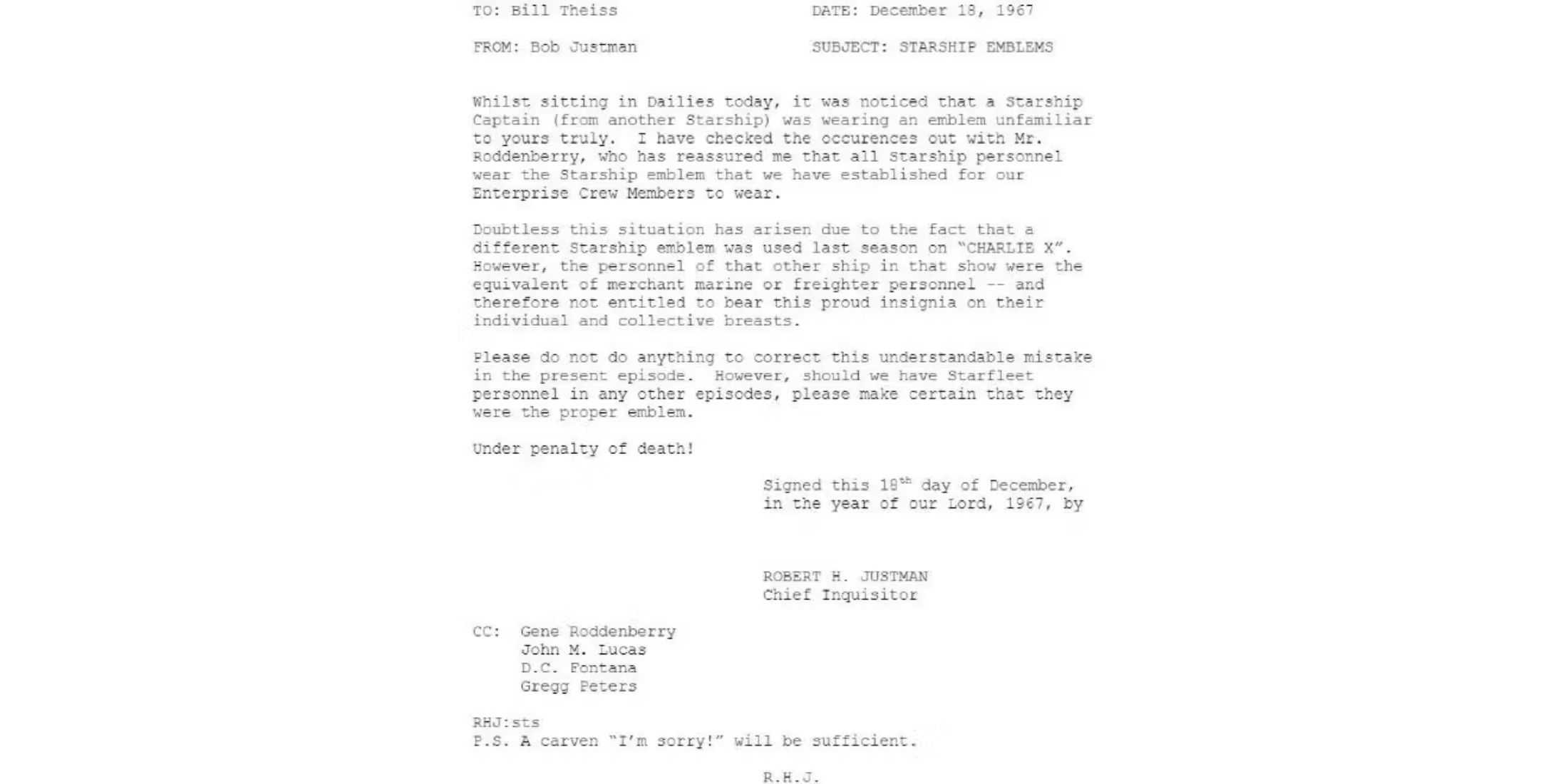
As a movie enthusiast, I was taken aback by a revelation regarding the starship insignia in an iconic series. The theory floating around for years was shattered with the emergence of a 1967 memo from producer Bob Justman. This letter, intended for costume designer Wahrman (Theiss), clarified that the enigmatic insignia spotted on the Exeter’s crew uniforms in “The Omega Glory” were not as they seemed. Contrary to popular belief, Starfleet personnel were supposed to sport the familiar delta emblem, not the unfamiliar insignia seen in certain episodes. This stunning truth came as a shock to many fans, debunking the notion that these variations were deliberate design choices; instead, they were mere oversights during production.
Immediately, the memo – not rediscovered until many years passed – essentially disproved the belief in unique ship insignias. Moreover, the theory that the emblem’s development represented Starfleet’s future unification under the United Federation of Planets was expunged from the established history.
TOS Production Challenges
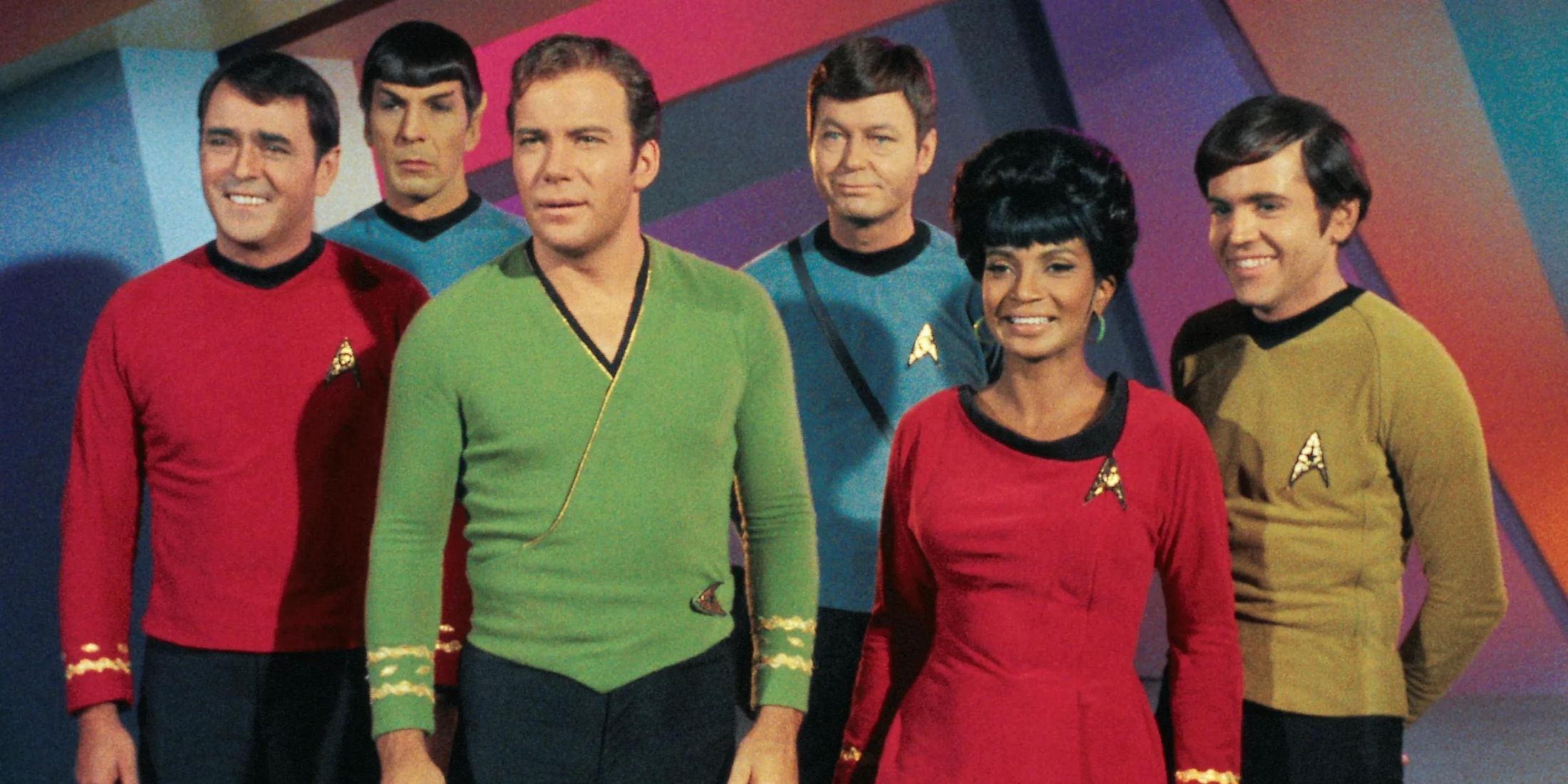
Although the varying insignia in Star Trek: Original Series may seem trivial, it serves as a testament to the challenges encountered during its creation. Renowned for its groundbreaking sets and some unforgettably cheesy episodes, the charmingly low-budget feel of The Original Series is what continues to draw fans today. As television was not yet widely recognized as an art form when this series first aired, it’s likely that the inconsistent insignias in TOS can be attributed to factors common in TV production during the 1960s.
- Costume Design Oversight: Costume designer Theiss likely took creative liberties with many of the show’s details, including the iconic uniform silhouettes that are still inspiring new installments. However, due to the way television was produced, it’s very likely neither Justman nor Ridberry were on set during the filming of this episode, and therefore, decisions were made without the intention of establishing ubiquitous insignia.
- Communication Gaps: The fast-paced nature of television production often led to miscommunications among the production team and general detail oversights, resulting in inconsistencies like the unintended use of unique insignias as well as many other continuity errors.
- Budgetary Constraints: Limited budgets mean less time on set and fewer hands on deck. Due to this being the show’s first run, its small budget may have led to the reuse of existing materials, costumes, or props. For example, Theiss may have had to make a last-minute decision to reuse an Enterprise uniform for an Exeter team member and make a quick insignia to differentiate the costumes.
Fan Reaction to the Revelation

As a dedicated Star Trek fan, I must admit that my feelings were divided when the previously undisclosed production memo surfaced among us enthusiasts. While some of us felt disheartened, as we cherished the depth added by ship-specific insignias and their eventual transformation into a universal symbol, others embraced this new knowledge with open arms. Finally understanding Roddenberry’s original vision for these emblems brought clarity to many of us.
Online discussions were filled with intense debates regarding an unexpected disclosure. Some contended that subsequent “Star Trek” productions established the concept of ship-specific badges through their use of distinctive emblems on specific ships and divisions. Others saw the memo as clear evidence that Starfleet had always intended a uniform insignia, but that early production inaccuracies led to widespread confusion for several decades.
In essence, finding Justman’s memo once again underscores the profound influence that every team member’s choice on set can exert over time. Precision in work is crucial, particularly in genre-building realms such as Sci-fi. The ship-specific insignia theory might not withstand thorough examination now, but its mark on Star Trek fanbase continues to be substantial. Despite any imperfections, the popularity of TOS paved the way for more series, movies, and spinoffs within the franchise for many years to come.
Conclusion
The 1967 memo from Justman significantly added to the historical significance of ‘Star Trek’ when it was rediscovered. It revealed that the famous delta emblem, initially thought to be unique to each starship, was actually intended as a universal symbol for all Starfleet crew members. This memo also shed light on TV production in the 60s. Despite having limited resources, the creators of ‘TOS’ managed to captivate fans right from the start, demonstrating their exceptional talent. As fans delve deeper into the expansive ‘Star Trek’ universe, knowing the thought process behind each detail enhances our admiration for the series and its legacy. It also underscores the enduring passion of the dedicated fanbase.
Read More
- AI16Z PREDICTION. AI16Z cryptocurrency
- Best Awakened Hollyberry Build In Cookie Run Kingdom
- Best Mage Skills in Tainted Grail: The Fall of Avalon
- Tainted Grail the Fall of Avalon: Should You Turn in Vidar?
- Top 8 UFC 5 Perks Every Fighter Should Use
- USD ILS PREDICTION
- Tainted Grail: How To Find Robbie’s Grave
- Nintendo Offers Higher Margins to Japanese Retailers in Switch 2 Push
- LUNC PREDICTION. LUNC cryptocurrency
- Nintendo Switch 2 Confirms Important Child Safety Feature
2025-03-11 00:36